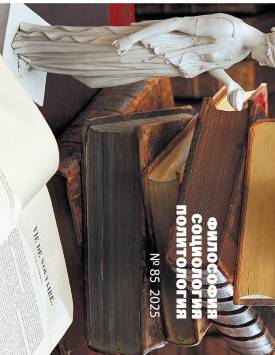Urban heterotopia as the third place: integration of approaches
The article justifies the integration of the concepts of heterotopia and the third place. The concept of the third place introduced by Ray Oldenburg, despite its popularity, has a serious drawback - the third place is described based on the experience of white American males who work full-time and are representatives of the middle class. Thus, the concept appears to be “elitist”, not taking into account the experience of more vulnerable social groups who may have their own alternative places. The integration of Michel Foucault’s concept of heterotopia can solve this problem, but this concept appears to be both large-scale and vague, so attempts have been made to define heterotopia through real examples in urban space. Examples show that urban heterotopia is characterized by polarized relations with other urban spaces and simultaneous isolation and permeability. Polarization can be expressed in the artificial creation of elitist spaces for certain social groups, or heterotopia itself performs the function of forming alternative social and cultural norms and practices without involving the entire urban space. Such an alternative view can act not only as a repulsive factor indicating the marginality of the place, but also, on the contrary, as a factor of attractiveness, distinguishing heterotopia from other places. In the article, garagebuilding cooperatives are considered as an example of a heterotopic third place. Signs of the third place are characteristic of such cooperatives, despite their other intended use - storing cars. At the same time, against the background of the crisis of masculinity, garages have become a space of alternative discourse for male car enthusiasts, thereby giving rise to a garage heterotopia. Thus, the example of garages shows that, by applying the approaches of Oldenburg and Foucault together, we expand the understanding of the third place and get the opportunity to identify them not only for the middle class, but also for other more vulnerable social groups. The author declares no conflicts of interests.
Keywords
third place, heterotopia, garage-building cooperatives, social inequality, social spaceAuthors
| Name | Organization | |
| Sharov Georgii D. | National Research University Higher School of Economics | gdsharov@hse.ru |
References

Urban heterotopia as the third place: integration of approaches | Tomsk State University Journal of Philosophy, Sociology and Political Science. 2025. № 85. DOI: 10.17223/1998863X/85/16
